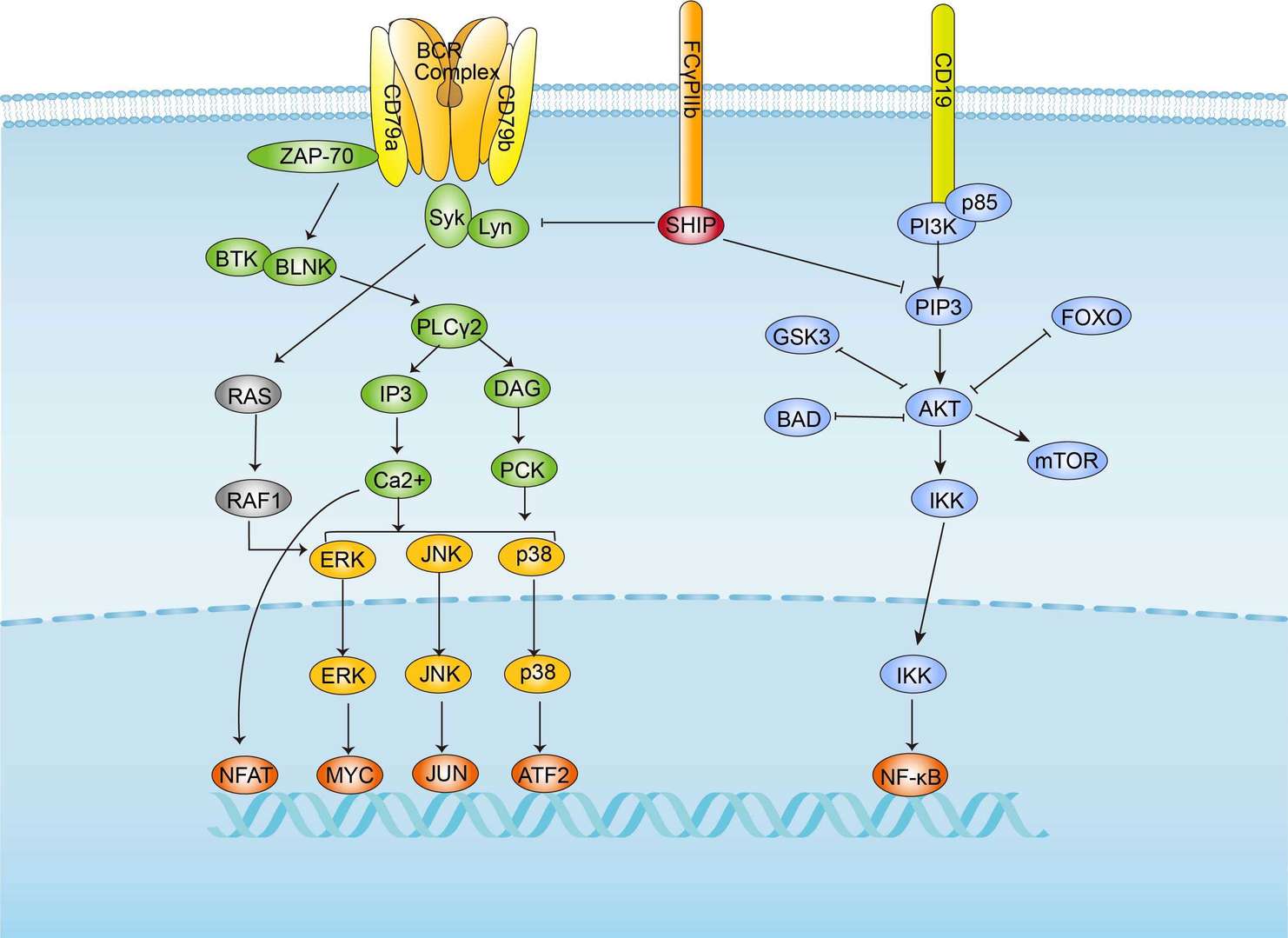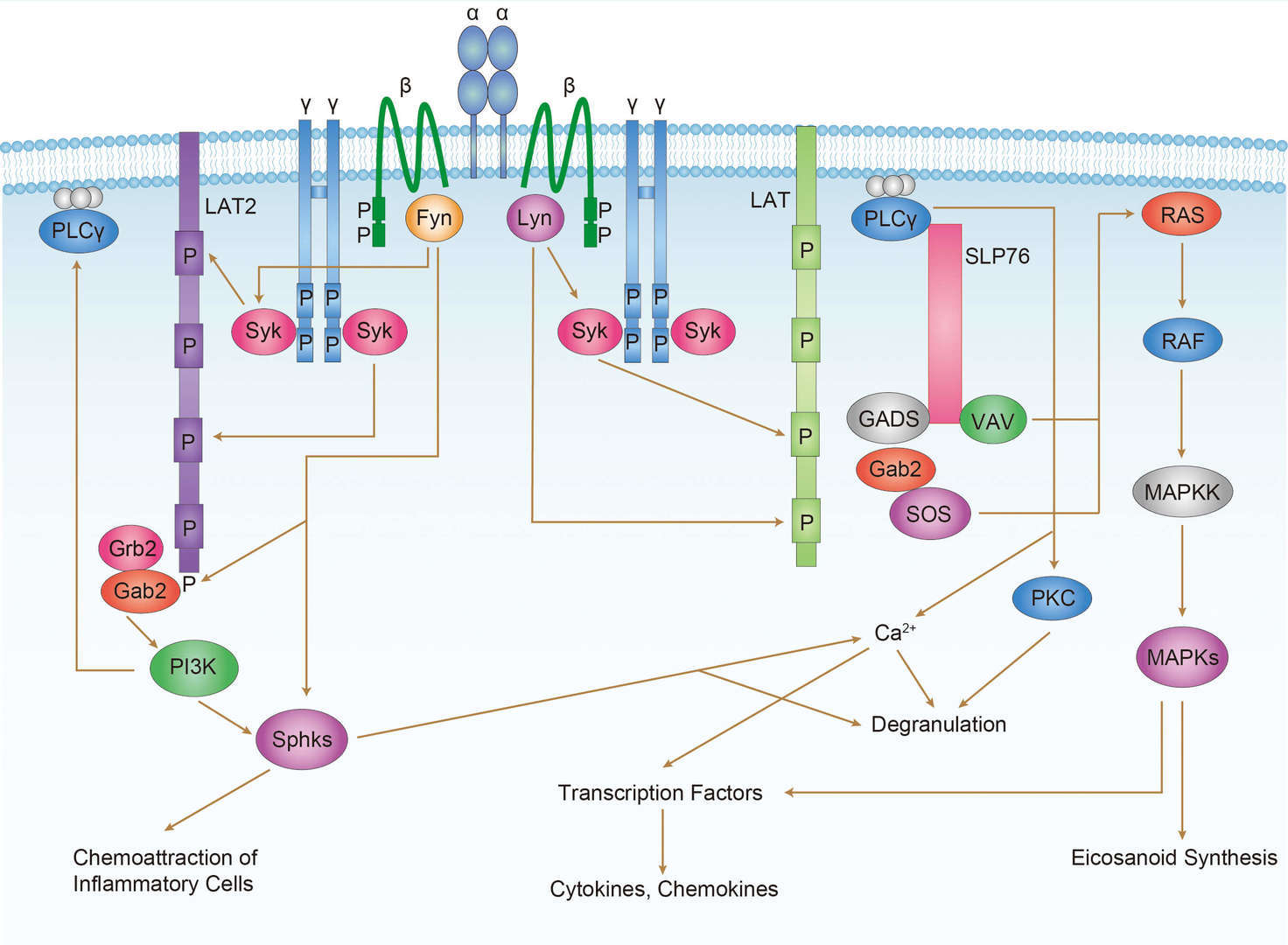 Loading...
Loading...

LYN
 Loading...
Loading...Anti-LYN Products
-
- Species Reactivity: Human
- Type: Mouse antibody
- Application: ELISA
- Mouse Anti-LYN Recombinant Antibody (clone 33H4) (MOB-2781z)
-
- Derivation: Mouse
- Species Reactivity: Human
- Type: Mouse IgG1
- Application: WB, ICC, IF, IP
-
- Species Reactivity: Human, Mouse
- Type: Rabbit IgG
- Application: WB, ICC, IF, FC
- Mouse Anti-LYN Recombinant Antibody (clone 2H8D7) (VS3-XY1023)
-
- Species Reactivity: Human
- Type: Mouse IgG2b
- Application: ELISA, WB
- Mouse Anti-LYN Recombinant Antibody (VS3-CJ478) (VS3-CJ478)
-
- Species Reactivity: Human
- Type: Mouse IgG1, κ
- Application: WB
-
- Derivation: Mouse
- Species Reactivity: Human
- Type: Mouse IgG1, κ
- Application: WB
-
- Derivation: Mouse
- Species Reactivity: Human
- Type: Mouse IgG1
- Application: WB
-
- Species Reactivity: Human
- Type: Mouse IgG
- Application: WB, ELISA
- Rabbit Anti-NHP LYN Recombinant Antibody (clone R.677.10) (VS-1024-XY312)
-
- Species Reactivity: Human, Mouse, Non-human primate, Rat
- Type: Rabbit IgG
- Application: WB, IHC, IF, IP
- Anti-LYN Immunohistochemistry Kit (VS-0325-XY1279)
-
- Species Reactivity: Human, Mouse, Rat
- Target: LYN
- Application: IHC
-
- Derivation: Phage display library screening
- Species Reactivity: Human
- Type: IgG
- Application: IP, WB
- Mouse Anti-LYN Recombinant Antibody (VS-0725-YC176)
-
- Species Reactivity: Human, Mouse, Rat
- Type: Mouse IgG
- Application: ICC, IF, IP, WB
Can't find the products you're looking for? Try to filter in the left sidebar.Filter By Tag
Our customer service representatives are available 24 hours a day, from Monday to Sunday. Contact Us
For Research Use Only. Not For Clinical Use.
Background

Cancer-related genes, Disease related genes, Enzymes, Metabolic proteins, Potential drug targets
Intracellular
Cell type enhanced (B-cells, Macrophages, Kupffer cells, monocytes)
Immune cell enhanced (neutrophil)
Cell line enhanced (HEL, HMC-1)
Interacts with TEC. Interacts (via SH2 domain) with FLT3 (tyrosine phosphorylated). Interacts with LIME1 and with CD79A upon activation of the B-cell antigen receptor. Interacts with the B-cell receptor complex. Interacts with phosphorylated THEMIS2. Interacts with EPOR. Interacts with MS4A2/FCER1B. Interaction (via the SH2 and SH3 domains) with MUC1 is stimulated by IL7 and the subsequent phosphorylation increases the binding between MUC1 and CTNNB1/beta-catenin. Interacts with ADAM15. Interacts with NDFIP2 and more weakly with NDFIP1. Interacts with FASLG. Interacts with KIT. Interacts with HCLS1. Interacts with FCGR2B. Interacts with FCGR1A; the interaction may be indirect. Interacts with CD19, CD22, CD79A and CD79B. Interacts (via SH3 domain) with CBLC, PPP1R15A and PDE4A. Interacts with TGFB1I1. Interacts (via SH3 domain) with PIK3R1, the regulatory subunit of phosphatidylinositol 3-kinase; this interaction enhances phosphatidylinositol 3-kinase activity. Interacts with CSF2RB, the common subunit of the IL3, IL5 and CSF2 receptors. Interacts with PAG1; identified in a complex with PAG1 and STAT3. Interacts with ABL1. Interacts with PTPN6/SHP-1. Interacts (via SH3 domain) with SCIMP (via proline-rich region) (PubMed:21930792). This interaction facilitates the phosphorylation of SCIMP on 'Tyr-107', which enhances binding of SCIMP to TLR4, and consequently the phosphorylation of TLR4 in response to stimulation by lipopolysaccharide in macrophages (By similarity). Interacts with LPXN (via LD motif 3) and the interaction is induced upon B-cell antigen receptor (BCR) activation. Interacts (via SH3-domain) with ANKRD54 (via ankyrin repeat region) in an activation-independent status of LYN. Forms a multiprotein complex with ANKRD54 and HCLS1. Interacts (via SH2 and SH3 domains) with UNC119; leading to LYN activation. Interacts with CD36. Interacts with LYN (By similarity). Interacts with SKAP1 and FYB1; this interaction promotes the phosphorylation of CLNK (By similarity). (Microbial infection) Interacts with Epstein-Barr virus LMP2A. (Microbial infection) Interacts with Herpes virus saimiri tyrosine kinase interacting protein (Tip).
Kinase, Transferase, Tyrosine-protein kinase


 BCR Signaling Pathway
BCR Signaling Pathway
 FcεR1 Signaling Pathway
FcεR1 Signaling Pathway

